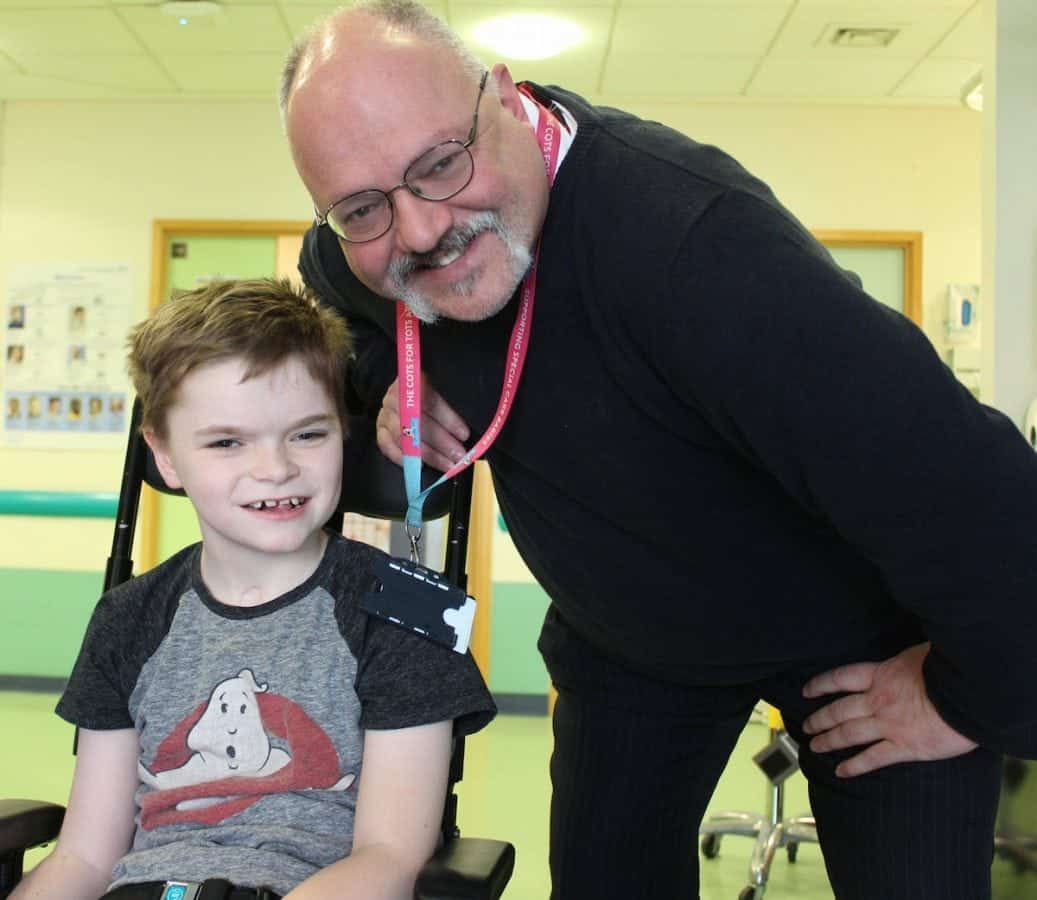A young boy has been cured of an ultra-rare condition affecting just 50 children in the world – thanks to pioneering treatment at a British hospital.
Sam Pearson, aged nine, was one of just 50 children in the world to suffer from gene mutation GNAO1 when he was diagnosed three years ago.
He was admitted to the Bristol Royal Hospital for Children in October 2015 after catching a chest infection which triggered violent, flailing body movements.
Sam , from Chippenham, Wilts, was put in an induced coma so his movements could be controlled in the paediatric intensive care unit.
Paediatric consultant neurologist Dr Mohammed Babiker became aware of a newly described mutation in a gene called GNAO1, which had shown similar symptoms to those Sam was experiencing.

He spoke to medics in London and Australia to decide on a course of treatment, before fitting Sam with a Deep Brain Stimulator (DBS).
The device works by placing electrodes into the affected area of the brain, creating an electric field which overrides the pathway causing the issue.
Carol Pearson, Sam’s mother, said: “It’s life changing, knowing that this should be the end of our long hospital stays.
“The first couple of weeks at home were tough, but now he’s doing so much better.
“The staff at the children’s hospital have been incredible and we can’t thank them enough.
“It’s wonderful to know that the treatment Sam’s having will also benefit others in the future.”
Less than ten patients in the world have received DBS as a treatment for this specific gene mutation, all of whom have had an excellent response.
Using a cutting-edge computer guided robotic technique for the surgery, which was part-funded by official children’s hospital charity The Grand Appeal, the DBS was implanted by a team of neurosurgeons at the BRI on November 2.
Sam is now recovering well and was discharged from hospital in time for Christmas.
He has started walking independently again, his medication has been reduced and he has returned to school.
Jenny Sacree, an advanced paediatric nurse practitioner who has been programming the device, added: “The aim of having this device is to prevent Sam from having another crisis episode and improve his quality of life.
“It’s amazing to see him and his family doing so well, Sam has such a wicked sense of humour and now everyone’s able to see it.
“He now has a lot more control over his movement and is coming on in leaps and bounds every time I see him.”

